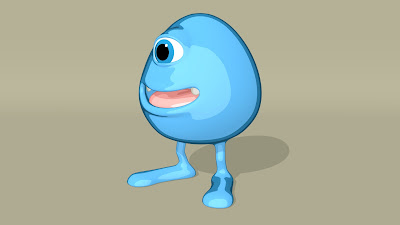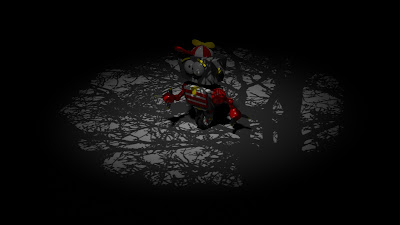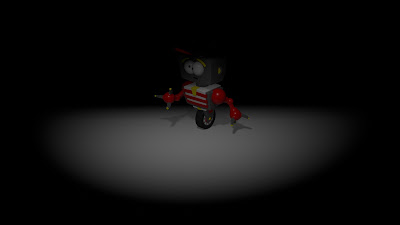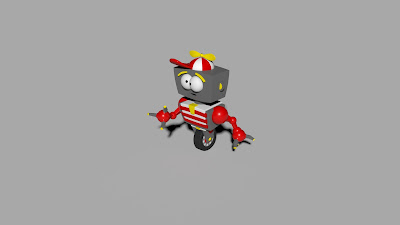Tuesday 26 December 2017
Thursday 21 December 2017
Friday 15 December 2017
Film Review | Character and Storytelling: Star Wars: The Force Awakens (2016)
“Star Wars: The Force Awakens is some kind of miracle. It works on every imaginable level - as a heartfelt love letter to fans, and an irresistible invitation to newbies, a visual marvel and blockbuster of unparalleled emotional heft and cultural significance” (Isaac Feldberg, We Got This Covered, 2016). Star Wars: The Force Awakens (2015) co-written and directed by J.J. Abrams is an epic space film about the Empire coming back as the First Order being stronger than before and seeks to eliminate the New Republic while the Resistance opposes them and try to find Luke Skywalker.
In this film, there are two main characters: the hero and the villain. The hero is Rey (Daisy Ridley), “Ridley is the picture’s real find. Her Rey is fearless, forceful, resourceful, and with a hidden side to her personality that slowly manifests itself and will surely be more deeply explored in the sequels” (Soren Andersen, The Seattle Times, 2015). Rey is a young woman who grew up alone in the desert wastes of Jakku thinking that her family will come back for her. Is at this moment when she meets BB-8, and her journey as a hero starts. During all this journey she discovers a lot of things about herself being probably the most important one the fact that she discovers her latent Force-sensitivity. At the beginning of the movie, she doesn’t have any goals, but at the end, her main goal is to find Luke Skywalker by herself. This is only the beginning for her as Kylo Ren (Adam Driver) said “She’s just beginning to test her powers. The longer it takes to find her, the more dangerous she becomes.”
On the opposite side, Kylo Ren is the villain. Kylo Ren is the son of Princess Leia Organa and General Han Solo, and before he joined the First Order (the dark side), he was a Force warrior and a former Jedi trained by his uncle, Luke Skywalker. Even though Princess Leia hoped he could be saved and left the dark side, in a confrontation with Han Solo, Ren kills him. And this demonstrates that he doesn’t care about his family, the only thing that matters to him is himself and his goals. His main goal is to finish what his grandfather (Sith Lord Darth Vader) started: the elimination of the Jedi.
Bibliography:
Soren Andersen (2016) Review of ‘Star Wars: The Force Awakens’: This new alliance is strong At: https://www.seattletimes.com/entertainment/movies/star-wars-the-force-awakens-this-new-alliance-is-strong/ Accessed on: 15/12/2017
Isaac Feldberg (2016) Star Wars: The Force Awakens Review At: http://wegotthiscovered.com/movies/star-wars-force-awakens-review/ Accessed on: 15/12/2017
Illustration List:
Image 1. Star Wars: The Force Awakens [Film Poster] At: http://www.starwars.com/news/star-wars-the-force-awakens-theatrical-poster-first-look-in-theater-exclusives-and-more Accessed on: 15/12/2017
Image 2. Star Wars: The Force Awakens [Film Still] At: https://www.seattletimes.com/entertainment/movies/star-wars-the-force-awakens-this-new-alliance-is-strong/ Accessed on: 15/12/2017
Film Review | Exploitation Cinema: Mad Max: Fury Road (2015)
Mad Max: Fury Road
(2015), directed by the filmmaker George Miller “delivers the sort of
jumbo-sized entertainment that makes you spontaneously break out in
appreciative laughter: The breadth of his imagination and showmanship makes you
giddy” (Rene Rodriguez, Miami Herald, 2015). Full of destruction, violence and
weird scenes, Mad Max is a prison escape post-apocalyptic action adventure
film.
Mad Max is also
part of the exploitation cinema where the main themes are sex, romance,
eroticism, violence, crimes, and drugs. The exploitation and the abuse are
represented by the two antagonists: Furiosa (Charlize Theron) who is a feminist
hero, and the Immortal Joe (Hugh Keays-Byrne) who is an evil leader of war boys
and woman sex slaves.
The whole film is
about Mad Max helping the hero of the story, Furiosa, to free a group of young
women sex slaves from the Immortal Joe. This can be understood as a feminist
revolution as all of these women are fighting against their oppressor without
taking care what they look like and if there are any chances to win. A woman
can be heroic too, and they can also fight for themselves and the rest of
society. Max’s role is quite important though because he is not the hero even
though he is also fighting, and his behavior transmits that violence doesn’t
make him more masculine as the Immortan Joe does.
“Mad Max: Fury
Road will leave you speechless, which couldn’t be more appropriate. Words are
not the point when it comes to dealing with this barn-burner of a
post-apocalyptic extravaganza in which sizzling, unsettling images are the
order of the day” (Kenneth Turan, Los Angeles Times, 2015). So in conclusion,
even though this fantastic film will leave you speechless, it is an
exploitation film, and women are shown as sexual objects, and it mainly
represents how women are getting more and more powerful. And that also
describes today’s society where women can be the hero too.
Bibliography:
Kenneth Turan
(2015) ‘Mad Max’ kick a post-apocalyptic extravaganza into overdrive At:
http://beta.latimes.com/entertainment/movies/la-et-mn-mad-max-review-20150515-column.html
Accessed on: 15/12/2017
Illustration List:
Image 1. Mad Max:
Fury Road [Film Poster] At:
https://www.imperialcinema.co.uk/films/mad-max-fury-road/ Accessed on:
15/12/2017
Image 2. Mad Max:
Fury Road [Film Still] At:
http://beta.latimes.com/entertainment/movies/la-et-mn-mad-max-review-20150515-column.html
Accessed on: 15/12/2017
Film Reviews | Adaptation: The Beauty and The Beast (2017)
Beauty and the
Beast (2017), directed by Bill Condon, is a live-action re-telling film of a
fantastic Disney’s fairy tale.
The story is about
Belle, a beautiful and independent woman who, because of saving his father, is
taken as a prisoner by a beast in his castle. There she befriends the castle’s
enchanted staff, and despite her fears, she gets to know the beast and realizes
the true colors of the Prince.
What was it
adapted from?
It was adapted
from Disney’s musical romantic fantasy animated film directed in 1991 by Gary
Trousdale and Krik Wise. This 1991 Beauty and the Beast movie stayed true to a
French fairy tale written by Jeanne-Marie Leprince de Beaumont and called The
Beauty and the Beast too, and it was also based on a 1946 French film directed
by Jean Cocteau and also named the same way.
Did it omit
anything to the source material?
Not at all, “The
Mouse House has taken no such chances with Beauty and The Beast. The plot, the
characters, the cheerful Howard Ashman and Alan Menken tunes: all have been
faithfully recycled, as though some enchantress has waved her wand over an old
cartoon and suddenly brought it screaming into the flesh-and-blood world” (A.A.
Dowd, AV Film, 2017).
Did it add
anything to the source material?
Nothing, Disney’s
tale as old as time doesn’t feel new, and it is that oldness the great point
about the film.
How did it bring
the source material to life visually?
Visual effects
everywhere. But as the effects company Digital Domain said, creating the character
of the Beast was the most prominent challenged mainly because it is “a digital
creation based on a performance by “Downton Abbey” star Dan Stevens”. “Often
actors wearing motion capture suits wear camera rigs on their heads and have
tracking points marked on their faces too. But it was decided that Stevens and
co-star Emma Watson should be able to see each clearly to interact more
realistically, so Stevens didn't wear a head-mounted camera. Instead, after
shooting a scene on set with the other actors, he would go into a studio at a
later date to record the second part of his performance. Those thousands of
tracking points were then mapped to the digitally-created face of the Beast,
transferring the nuances of Stevens' performance to the outlandish creature”
(Richard Trenholm, CNet, 2017)
Did it succeed or
fail at the box office?
That's a yes! “
Meanwhile, the Beauty and the Beast earned $490.6 million domestically (and
counting) in its first week in theaters, while its international box office had
swelled to $262 million as of Friday. Adjusted for 2017 rates, the 1991 film’s
haul is more like $760 million - but the new Beauty is expected to surpass that
figure as well before long” (Yohana Desta, Vanity Fair, 2017).
Bibliography:
A.A. Dowd (2017)
Why remake Beauty And The Beast and do nothing new with its tale as old as
time? At:
https://film.avclub.com/why-remake-beauty-and-the-beast-and-do-nothing-new-with-1798190749
Accessed on: 15/12/17
Richard Trenholm
(2017) Beauty of the Beast: The cutting-edge effects behind Disney’s hit At:
https://www.cnet.com/news/beauty-and-the-beast-visual-effects-digital-domain-dan-stevens-emma-watson/
Accessed on: 15/12/17
Yohana Desta
(2017) How Beauty and the Beast Became One of Disney’s Most Profitable Gambles
At: https://www.vanityfair.com/hollywood/2017/03/beauty-and-the-beast-animated-box-office
Accessed on: 15/12/17
Illustration List:
Image 1. The
Beauty and the Beast [Film Poster] At:
http://www.impawards.com/2017/beauty_and_the_beast_ver3.html Accessed on: 15/12/17
Image 2. The
Beauty and the Beast [Film Still] At:
http://www.news.com.au/entertainment/movies/your-childhood-comes-to-life-in-the-first-trailer-for-disneys-beauty-and-the-beast-starring-emma-watson/news-story/0497a8c0116a42afcd20b5ba6eb1c163
Accessed on: 15/12/17
Film Review | The Hero's Journey: UP
The story starts with a storyline meeting Carl, the hero of this story,
and Ellie, his wife. After Ellie dies, Carl has to live alone in their house.
And here it is when his hero’s journey begins.
The Call to Adventure is when there is a construction project
around Carl’s house, and the construction company wants Carl to leave his
house, something he doesn’t want to do mainly because his house is his comfort
zone, his everything. Carl refuses that call (Refusal of Call) when he
starts to have problems with the construction company. Carl loses his house to
a lawsuit and is sent to a retirement home to live there for the rest of his
life. Before he leaves, he finds his childhood book and realizes that he still
has not been able to go to Paradise Falls. Then, Carl meets Russel, a
wilderness explorer who wants to help him, and that is the Supernatural Aid.
Even though Russel is just a kid, he is Carl’s mentor because he is the one who
forces Carl to be the hero. But at first, Carl denies any help from Russel.
Crossing the First Thresholds is when Carl attaches helium
balloons to his house and flies through the sky. Once his house is lifted up,
there is no going back. Then he realizes Russel is still in his house and
decides to take him back home, but there is a thunderstorm where Carl has a
near-death experience (Belly of the Whale). Carl wakes up in South
America, being far away from the Paradise Falls.
The Road of Trials starts when Carl struggles to get his house to
Paradise Falls and also has to deal with Russell, Kevin (the Paradise Falls
bird), Dug (Charles Muntz’s dog) and Charles Muntz (Carl’s childhood hero, who
is also the villain of the movie). Charles hunts Kevin and Russel decides to
save him but gets caught too.
Before Carl decides to go to save Rusell and Kevin, he goes inside his
house and sees a photo of Ellie, and that is the Meeting the Goddess.
Ellie did not do much to help Carl, but she somehow encourages him as she is
essential for Carl.
Temptation is when Carl only thinks about getting his house in
the Paradise Falls without thinking about Kevin and the others.
The Atonement with the Father is Russell telling Carl a story
about counting cars with his father, which even though it seems to be boring,
that is one of the things he loves the most basically because of doing it with
someone he loves. Carl realizes that Russel is just a lonely boy seeking for
love and attention because it’s something he doesn’t get from his dad. The Apotheosis
comes along when Rusell decides to save Kevin by his own but he gets captured
too, and Carl discovers that even though Ellie didn’t achieve her dream of
living next to the Paradise Falls, her greatest adventure was her relationship
with Carl. She somehow encourages Carl to continue having adventures.
The Ultimate Boon is when Carl decides to go after Muntz throwing
out all the excess of weight and getting his house back in the air. He is ready
to go ahead on the final challenge with excitement and determination. Once his
house is lifting up leaving all his belongings there, there is not going back,
and that is the Refusal of Return. The Magic Fight is Carl’s
fight with Muntz as he tries to rescue Rusell, Kevin, and Dug. As Carl is about
to be killed by Muntz, Dug saves him being this the Rescue from Without.
Then Carl goes back to home with Russel and Dug (Crossing the Return
Threshold). Master of Two Worlds is when apart from achieving the
dream of having his house in the Paradise falls, he has also achieved happiness
by living in the present and not in the past anymore. And finally, the Freedom
to Live is when he sits on the sidewalk counting cars with Russel,
something boring but better than a wild adventure because he is with someone he
loves.
Illustration List:
Figure 1. Up (2009) [Film Poster] At:
https://en.wikipedia.org/wiki/Up_(2009_film) Accessed on: 15/12/2017
Figure 2. Up (2009) [Film Still] At:
http://bgr.com/2016/06/17/pixar-shorts-movie-list-supercut/ Accessed on:
15/12/2017
Figure 3. Up (2009) [Film Still] At:
https://www.odt.co.nz/entertainment/film/film-review Accessed on: 15/12/2017
Thursday 14 December 2017
Tuesday 12 December 2017
Thursday 7 December 2017
Wednesday 6 December 2017
Subscribe to:
Posts (Atom)








































